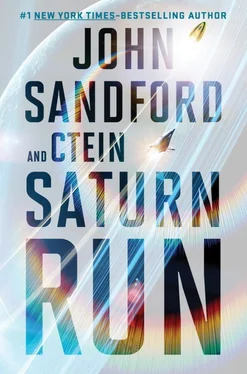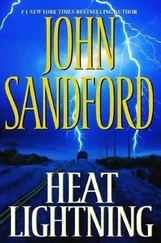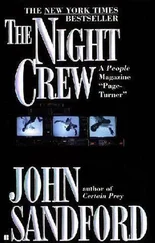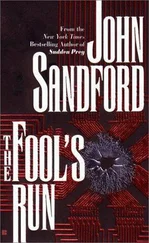There are only four ways to move heat around: convection, conduction, transport, or radiation. The first two can’t get the heat off of the ship—in a vacuum, there’s nothing to conduct heat away from the ship, nor is there gas circulation to convect it. You could transport it off, use it to heat up reaction mass and send it out a rocket nozzle. But that’s just a nuclear thermal rocket like the Chinese have, and it’s nowhere near efficient enough for the Nixon . It also requires infeasibly humongous amounts of heat-absorbing reaction mass; nine gigawatts is an awful lot of heat to be dumping off the ship, day in and day out for months and months.
We’re left with radiation. Simple physics describes getting rid of heat by radiation (see “blackbody radiation,” Wikipedia). At 80°F (27°C or 300 Kelvins) a two-sided radiator can dump about a kilowatt of heat (1 kW) per square meter into space. That’s a lot by human standards, but it means the Nixon would need about nine square kilometers of radiator to get rid of all its waste heat—roughly the area of 1,700 American football fields. That would weigh far too much. Physics works in our favor, though. The amount of power you can radiate goes up as the fourth power of the Kelvin temperature. At 600°C (870K) that same square meter of radiator can dispose of 65 kW of heat. That takes the radiator down to a manageable size.
This requires running the whole power plant hotter, because the theoretical efficiency of the power plant is determined by the starting temperature vs. the final temperature (see “Carnot,” Wikipedia). We’ve kicked the final temperature up nearly threefold, so the source temperature has to go up accordingly. That takes us out of the range of boiling water reactors and generators and into the world of pressurized liquid sodium, running at a red heat.
Is this insane? Definitely, by today’s standards. We looked at power plant performance and benchmarks for the past century-plus, and extrapolated those trend lines forward fifty years. In half a century it doesn’t seem so crazy.
What kind of radiator can run at 600°C? The only possible working fluid is molten metal, and that also works in our favor. Melting metals can absorb huge amounts of energy, far more than any other material. Aluminum, for example, melts a little higher than our working temperature, and melting 2.5 kilograms of it per second will suck up a megawatt of heat. Our imagined radiator alloy is a little better than pure aluminum, but not a whole lot. It’s all plausible; we’re still doing science and engineering, not wild imagining.
Some simple algebra and punching numbers on a four-function calculator tells us the size for the radiator sail, the speed of the sail ribbons, and the thickness of the ribbons. They are interrelated. The speed of the ribbons has to allow enough time for the semi-molten ribbons to completely solidify before they reach the collection beams. The amount of ribbon being extruded each second has to be sufficient to carry all the waste heat from the Nixon .
A minor bit of cleverness. That thin layer of solid cladding that’s frozen onto the ribbon as it’s extruded does three things for us. It roughens the surface, which improves the radiation characteristics (see emissivity). It keeps the ribbon a ribbon—molten metal has very fierce surface tension, and a thin liquid ribbon would otherwise break up into droplets almost immediately. Finally, it prevents evaporation of the metal. Typical metal vapor pressures are very low at 600°C, but you’d be talking about over a quarter kilometer of surface area and a year’s time. You’d have to carry along considerable amounts of spare radiator metal to make up for evaporative losses. In space, it’s waste not, want not.
So this is all pretty great: we have two ships that will fly more or less the way we need them to. What will those flights look like? That’s orbital mechanics, and while the physics of that is high school–level Newton’s laws stuff, the calculations are lengthy. They would’ve been impossible without personal computers.
We got lucky on one point. The starting date for the book was an arbitrary choice and the pacing up to the point where the ships launch was dictated by what would keep the story moving properly (and launch windows—the right alignment of the earth, sun, and Saturn). As it happened, we wound up in the easiest time frame for calculating orbits. None of the other planets came anywhere close to possible orbits for our spacecraft. All we had to deal with was the earth, sun, and Saturn.
We did the orbit simulations in a Windows program called Orbiter. That wound up consuming hundreds of hours of computer and personal time. Continuous-boost spacecraft like the Nixon are still exotic enough concepts that very few software packages can deal with them easily. Those programs are expensive and specialized, their normal clientele being major aerospace companies and research institutions.
Orbiter could very accurately calculate the motion of the spacecraft for each step along a trajectory, but those steps had to be carefully and manually specified. When the Celestial Odyssey was falling free, far from the gravitational influence of the earth or Saturn, a step could span months of simulated time (on the computer, that ran in minutes). We just needed the steps to be close enough together that we’d know where the Chinese were at any particular time in case that needed to be mentioned in the story. Entering or leaving orbit involved a lot more steps because the ship’s trajectory was changing very quickly.
Simulating the Nixon was much harder. Except when Bad Things happened to it, it was never in free fall. The simulation steps had to be close enough together to accurately model the trajectory of a spacecraft that was always accelerating or decelerating. Spiraling out from Earth orbit took about fifty steps to simulate, similarly for the transit from Earth to Saturn. At each step, the thrust parameters were keyed in, the time interval specified, the step calculated, and the data—velocities and positions relative to the earth, sun, and Saturn—extracted and transferred to a spreadsheet. That spreadsheet also produced a plot for us showing the spacecraft’s trajectory against the earth, sun, and Saturn. A different spreadsheet tracked energy budget—reaction-mass consumption, mass ratios, exhaust velocities, and accelerations.
We ran nearly a hundred such simulations as we developed the story. Some of those runs were dictated by plot changes as we developed the novel, but most were experiments designed to answer questions. How does the Nixon ’s departure date affect the travel time? How long can the Chinese wait before chasing after the Nixon ? What’s the best way to get back to Saturn? What’s the most efficient trajectory for a return to Earth?
Real rocket science. We think we did it pretty well.
It’s not what’s important, though, not really. You enjoying the story we told you, that’s what matters.
Now it’s time for a confession. There is one chunk of wantum mechanics in Saturn Run . We don’t have the faintest clue how to make antimatter efficiently and in quantity. Antimatter’s real, but physicists only know how to make it positron by positron, antiproton by antiproton. The price is currently many trillions of dollars per gram, and all the antimatter ever made amounts to a microscopic fraction of a gram. A way to make tons of it, in solid iron form? We totally faked that out of plausibly appropriate physics jargon. That shouldn’t be a big surprise. If we knew how to do this, the Powers That Be wouldn’t let us write about it freely. They probably wouldn’t even let us walk around freely.
But the rest of it? Real science and real technology, extrapolated as realistically as we could.
Читать дальше








